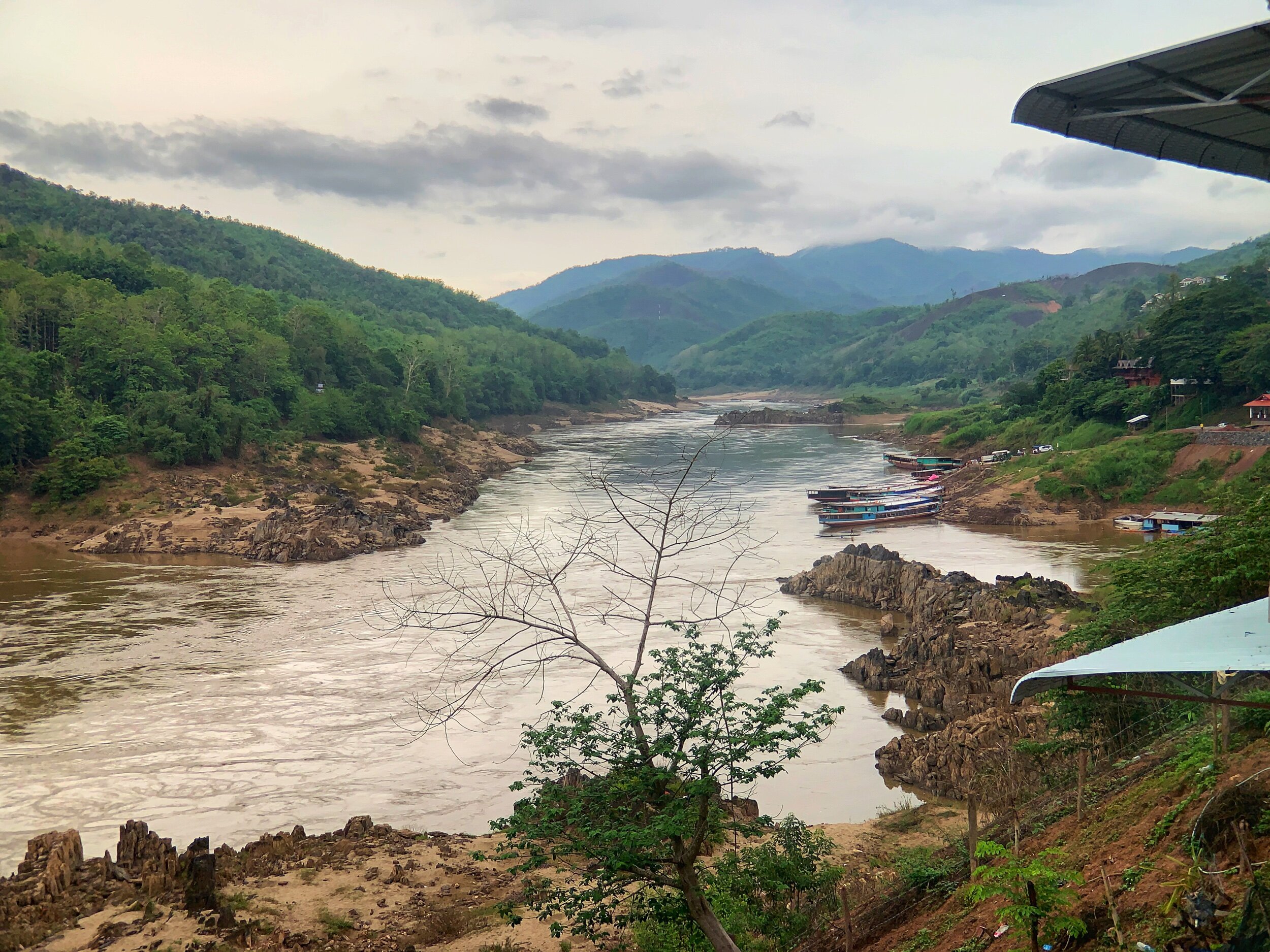Pause and Push
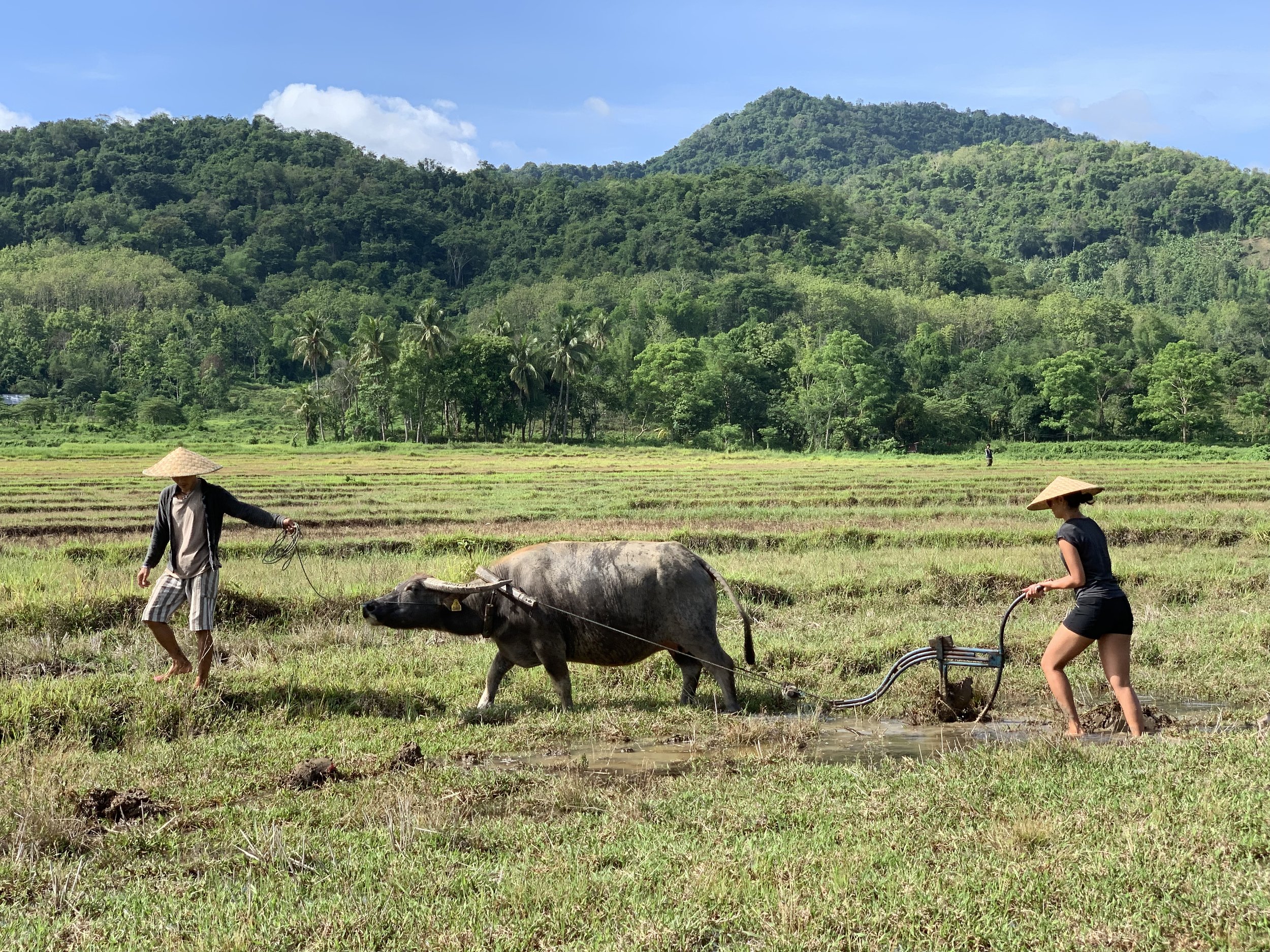
Five years and two kids later, I still find myself diving back into our trip. Why? What can poring over old notes and photos reveal beyond happy memories of adventures long past?
Is it…the desire to find a momentary escape from life today? The last few years have been some of my happiest and most fulfilling, from starting a family to building a meaningful healthcare company. But the day-to-day can be a grind. My adventures now consist of navigating parenthood versus new corners of our world. I can’t help but laugh when I look at the car seats, diapers, bottles - just all the stuff - we need to pack for a simple afternoon in the park, compared to the two backpacks that held our entire lives in 2019.
Is it… my nagging OCD to complete the blog? Like an author dusting off an unfinished novel, I’ve looked at this blog as both gratifying and intimidating, a passion project I’ve told myself I’ll finish when I finally catch a break. News flash - that break never comes.
Is it…because I miss my creative outlets? The writing, reading and introspection while putting together these blog posts felt like an essential part of me. I’ve always found writing, in particular, a powerful tool for self reflection, helping wrap language around emotions and tie threads across experiences. But it’s also a deeply personal pleasure. You enjoy your hobbies because you simply do, and at some point they become limbs to your identity that call for nourishment. Since our trip ended, I’ve done little to feed them.
The preamble above is fitting for our experience Luang Prabang, a city that left us looking within and questioning how we structured our entire world trip in the first place.
Overlooking serene Luang Prabang
Luang Prabang is a historic city in Laos nestled between the Mekong and Nam Khan rivers. You feel its youthfulness and calm immediately. Motorbikes balance full families and babies, zipping by with smiles. Monks young and old stroll in contemplative silence. Lush greenery hangs on every corner, from the French colonial streets to traditional Lao temples. It’s lively without the chaos of the Asian cities we had visited thus far, driven in part by the region’s roots in Bhuddism.
While many Bhuddist practices are integrated into daily life here, nothing was more special than joining monks for Tak Bat, or morning alms, during our stay. Every morning at sunrise, monks from local temples do rounds to collect alms from the community. The streets fill with locals who drop fresh food, from fruit to balls of sticky rice, into the monks’ baskets. It’s all done in a respectful silence - the monks don’t speak, and the givers kneel quietly. Locals refrain from eating anything themselves before providing the alms, and the monks typically don’t eat anything else the entire day. The monks are all cloaked in bright saffron robes and march in single file line silently, including kid monks no older than 10 years old struggling to keep stride with their elders. It was an endearing and spirtual display that Anushka and I felt lucky to experience.
Sharing morning alms with monks of all ages
Rewind back a few decades though, and Lao history stands in stark constrast to the spirited society of today. The UXO (Unexploded Ordnance) Museum was a sombering reminder of, yet again, America’s botched involvement in foreign affairs. The US dropped more than 2 million tons of bombs in Laos during the Vietnam war - more than the total number of bombs dropped during WWII combined. The consequences, to no surprise, are devasting. 80 million cluster bombs are still left in the country today and expected to take another 100 years to clear out. The leftover bombs have handicapped the nation’s development, making thousands of acres of agrable land unfarmable and walks to school or work dangerous. These bombs still cause over 300 deaths a year. And yet, just like we experienced in Chile, people welcomed Americans with open arms and smiles. It’s humbling. The ability to distinguish the people from its government is one I wish we practiced more in America. I have a tough time imagining us, 25 years after 9/11, extending a similar hospitality to Muslims. But maybe it takes a full generation or two to get there.
Greeted by bomb shells at the small but powerful UXO Museum
I’m still waiting for Laotian food to have it’s moment in America. It’s incredibly fresh, flavorful and veggie forward, like a more botanical take of Thai food with some French twists. Our mornings started touring the markets, where pho noodles with vegetarian broth are served as the staple breakfast. The broth is made fresh daily, filled with fried garlic, scallions, cilantro, boiled eggs soaked in soy sauce, more spices than you can count, and soft noodles that are made for slurping. Earlier you go, the better. Pair that with a strong French roast, bowl of dragon fruit and melons, and cocount pancakes, and you’ll find yourself jumping out of bed at 5am for breakfast every day like we did.
I’d also highly recommend dinner at Tamarind, where we got a wide taste of traditional Laotian food. We sampled everything from bamboo shoot soup, lemongrass stuff with chicken, and river fish steamed in banana leaf, all mopped up with sticky rice. Lao cuisine may lay claim to the kings of sticky rice. Families eat it like chapati here, balling it up and dipping it in every dish.
If that weren’t enough, we surpsingly ran into incredible pizza in Luang Prabang at Secret Pizza. Open only 2 days a week, it easily rivaled pies from Naples and NYC.
The morning broth was so good, I had to get a picture with the magic maker
Another highlight was our visit to the Living Land Farm Experience, set on a beautiful farm outside of Luang Prabang. Anushka and I got our hands and feet dirty learning the life cycle of rice from beginning to end. From sowing seeds to plowing land with buffalo, to using ingenious handmade instruments to clean and separate the rice from the husk, it was an eye-opening, and demanding, experience. It made us appreciate those little white grains and wonder, “how does something so common and so cheap involve so much damn work?” Afterwards, we were rewarded with a full Laotian meal on the farm. We feasted on a full plate of chicken, veggie coconut curry, and a hand-picked salad from their herb garden of parsley, mint, and leafy greens.
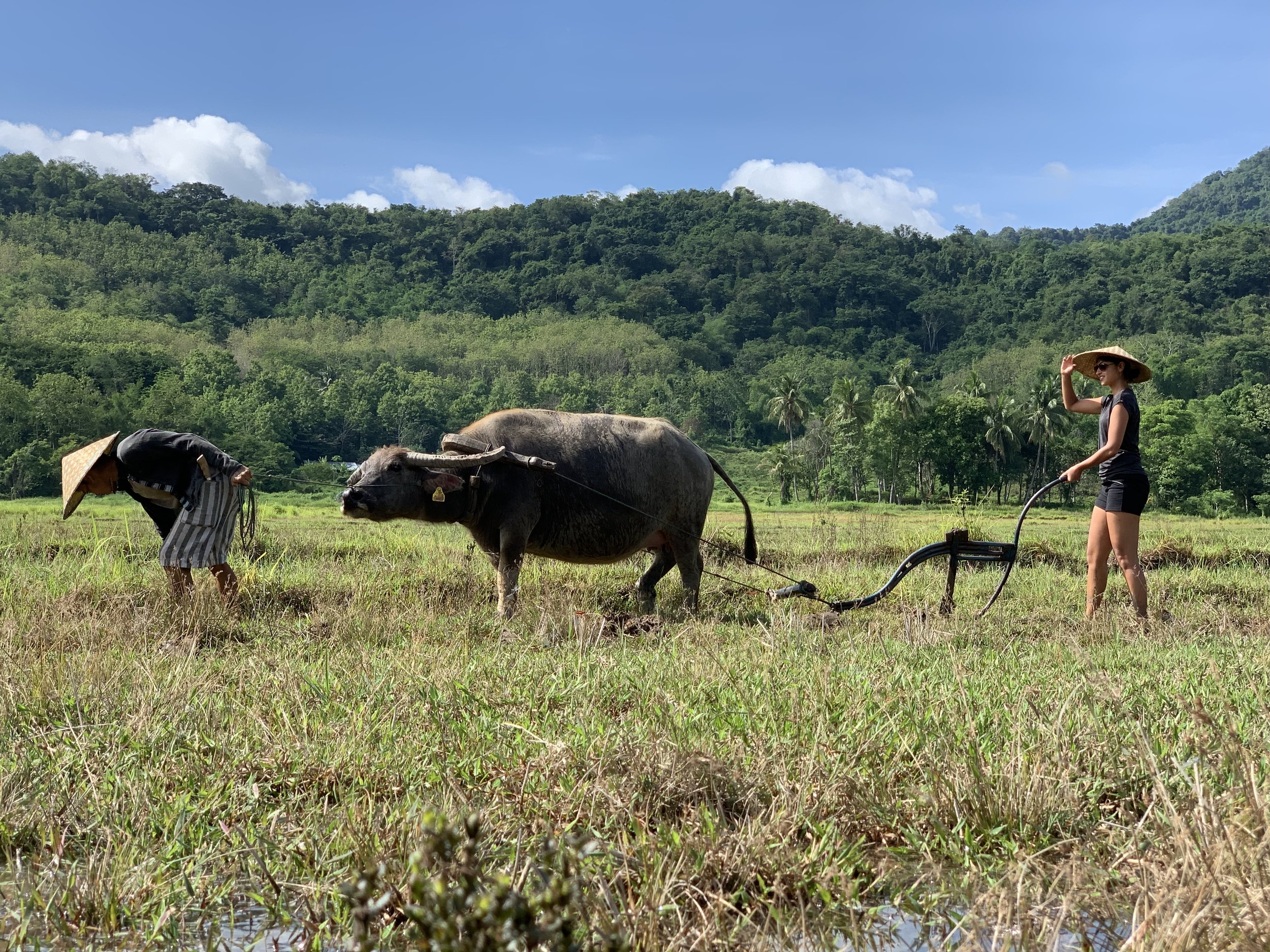
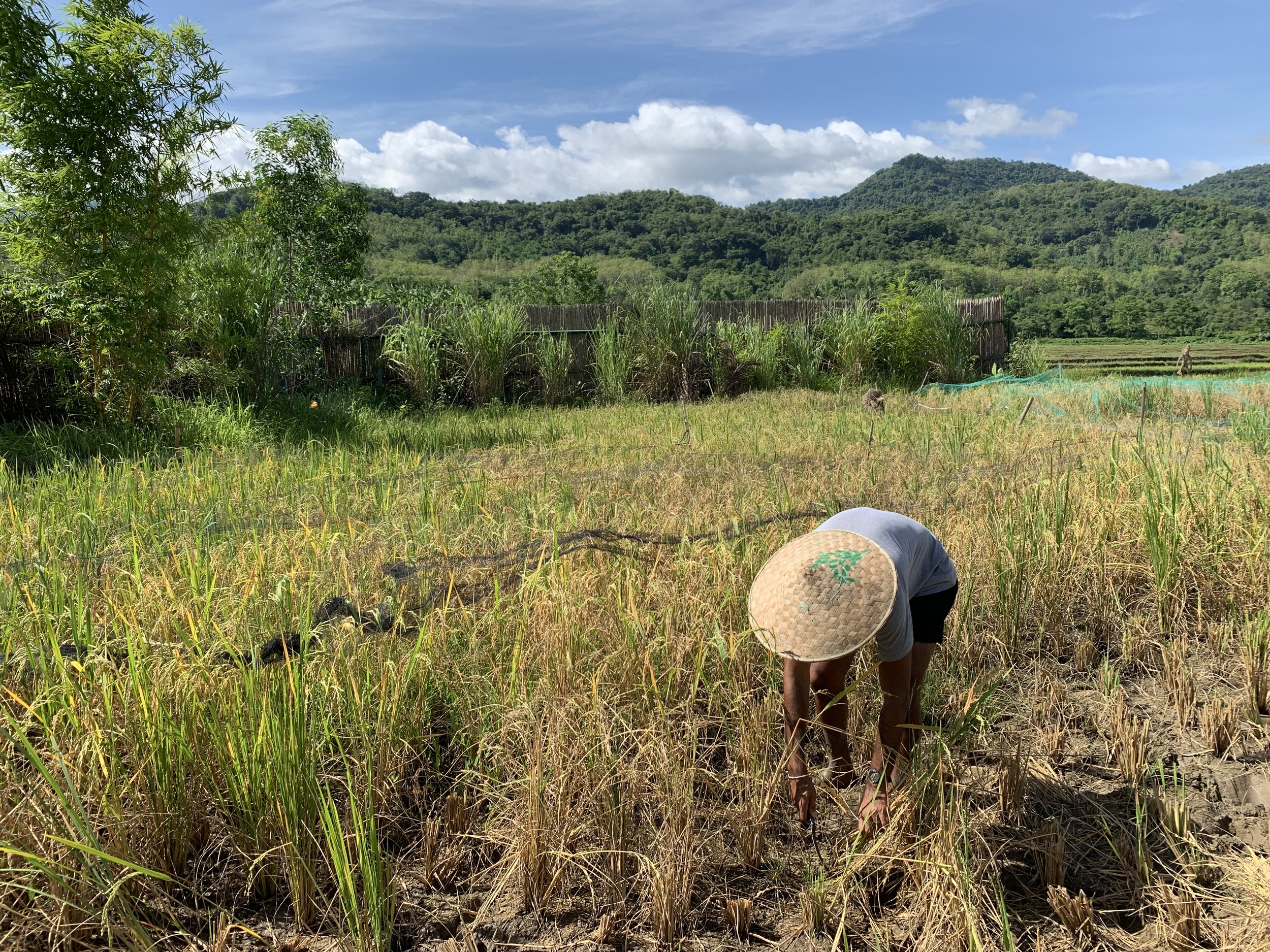
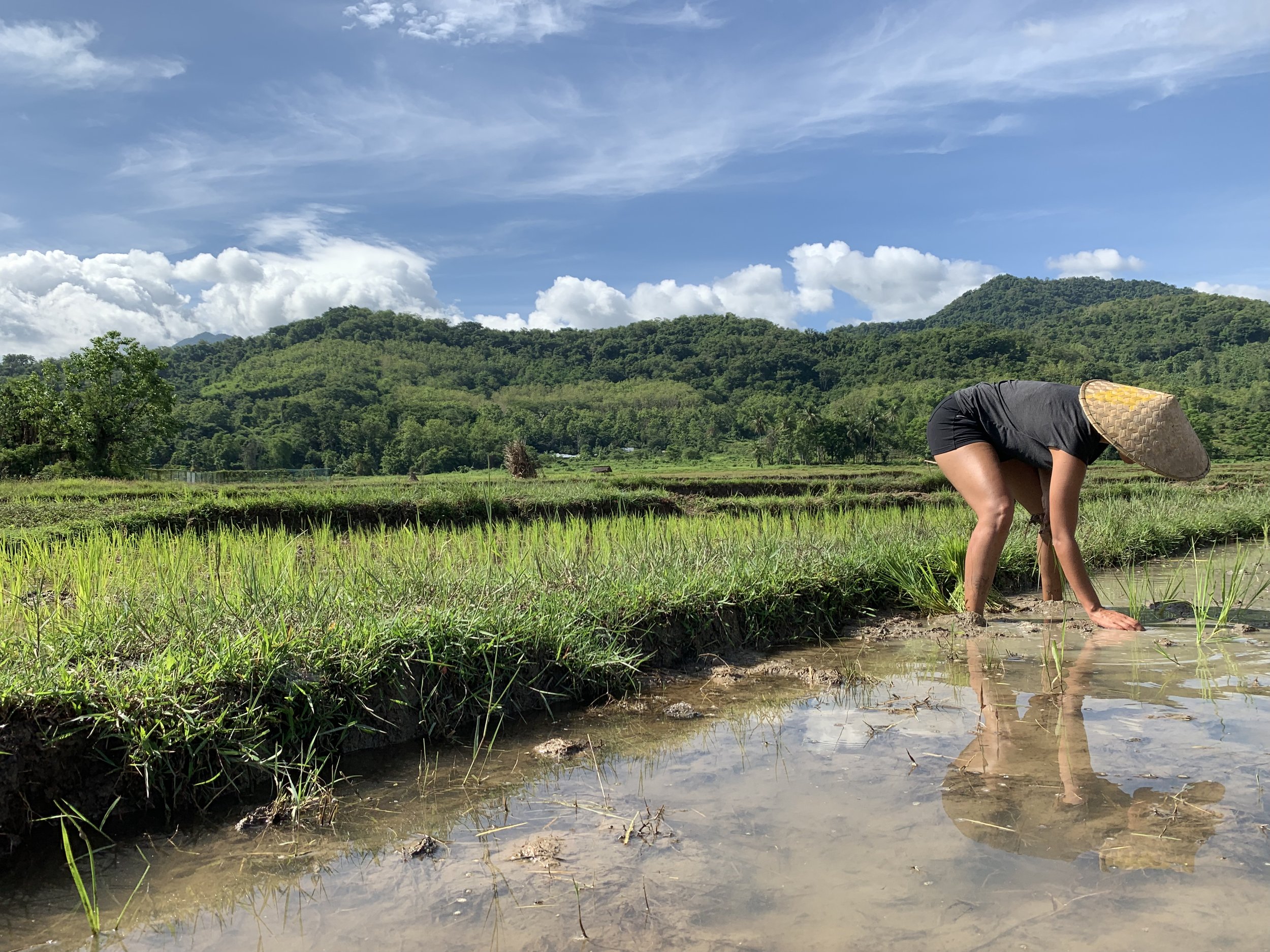
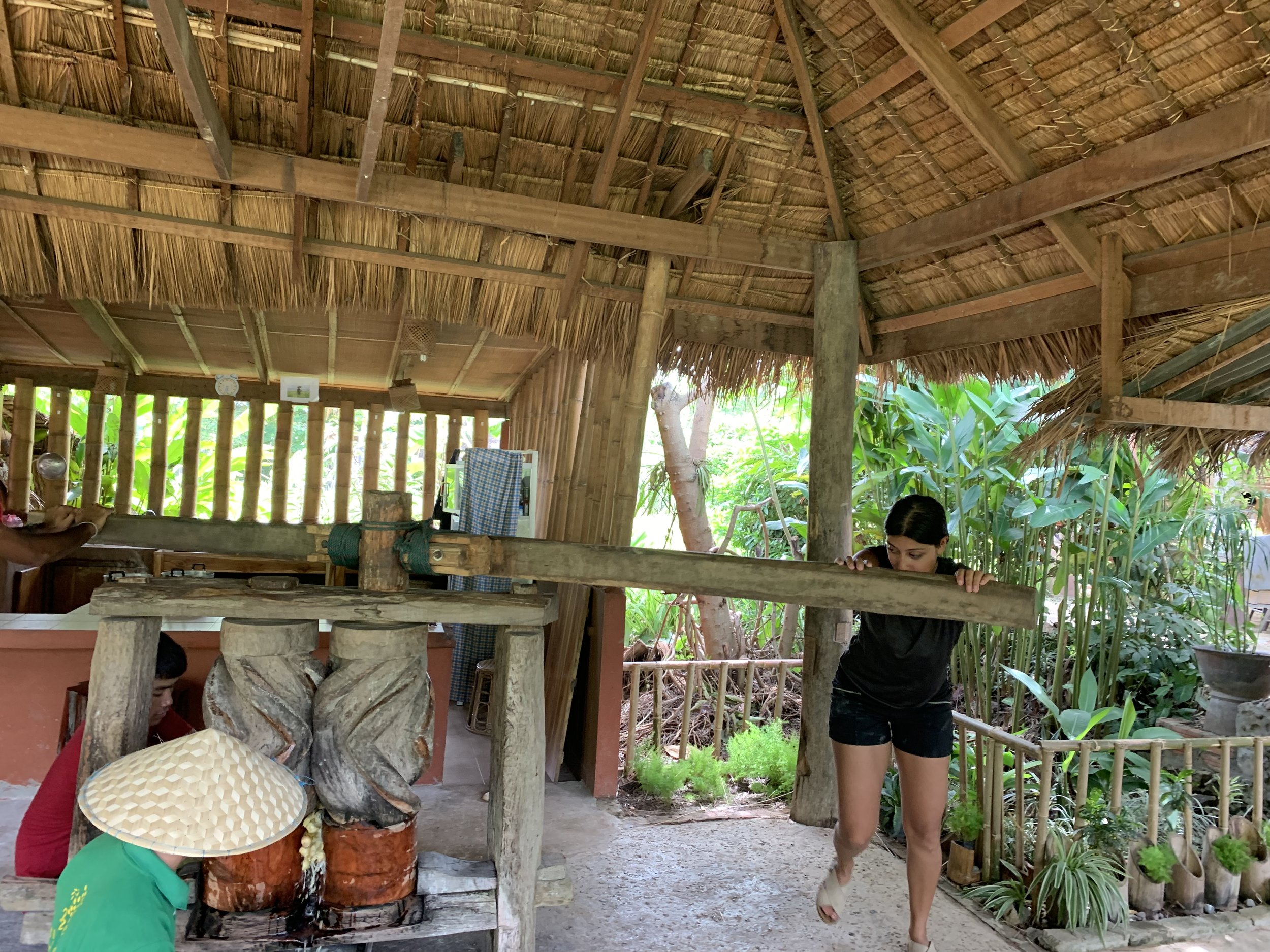
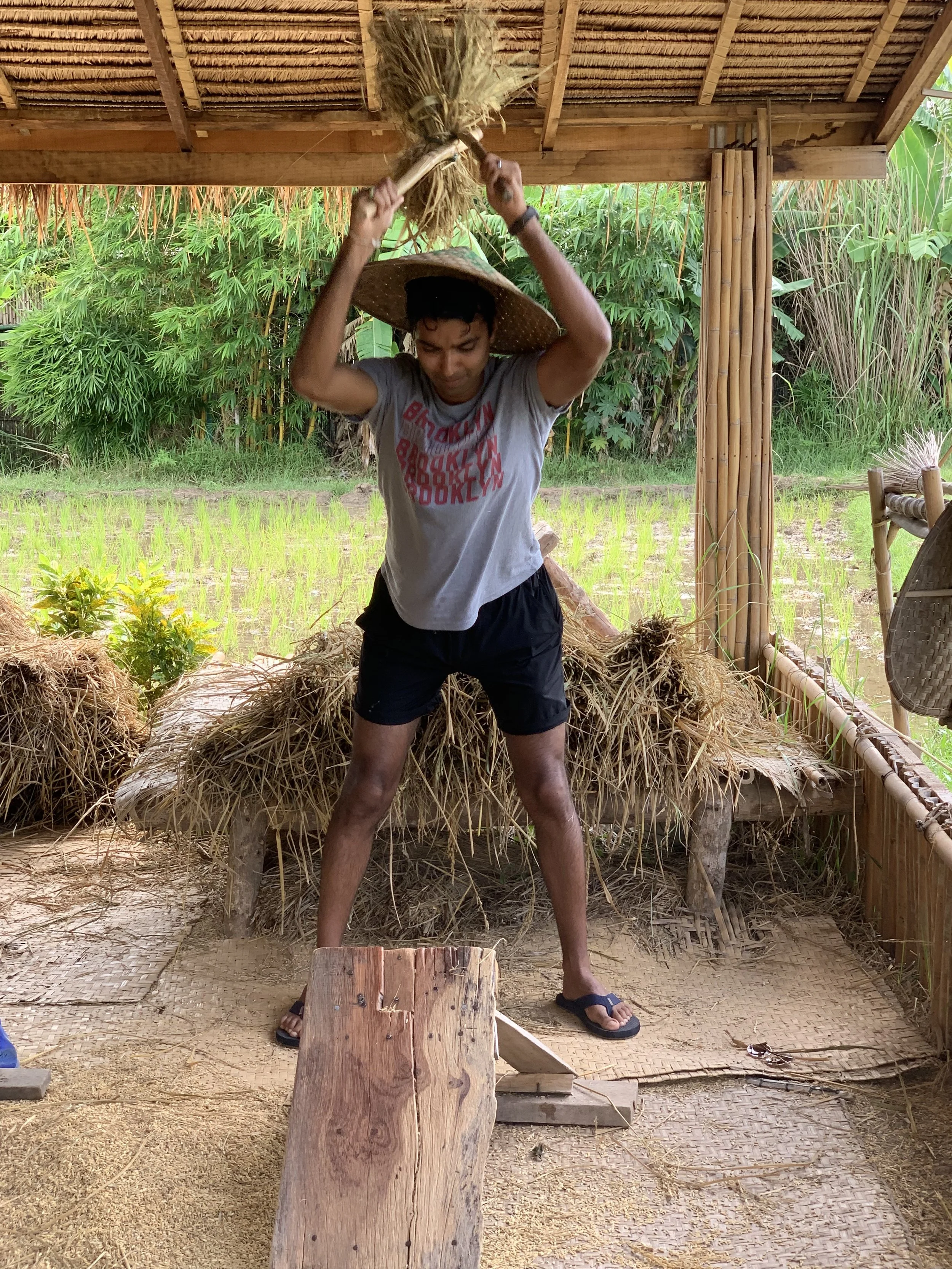
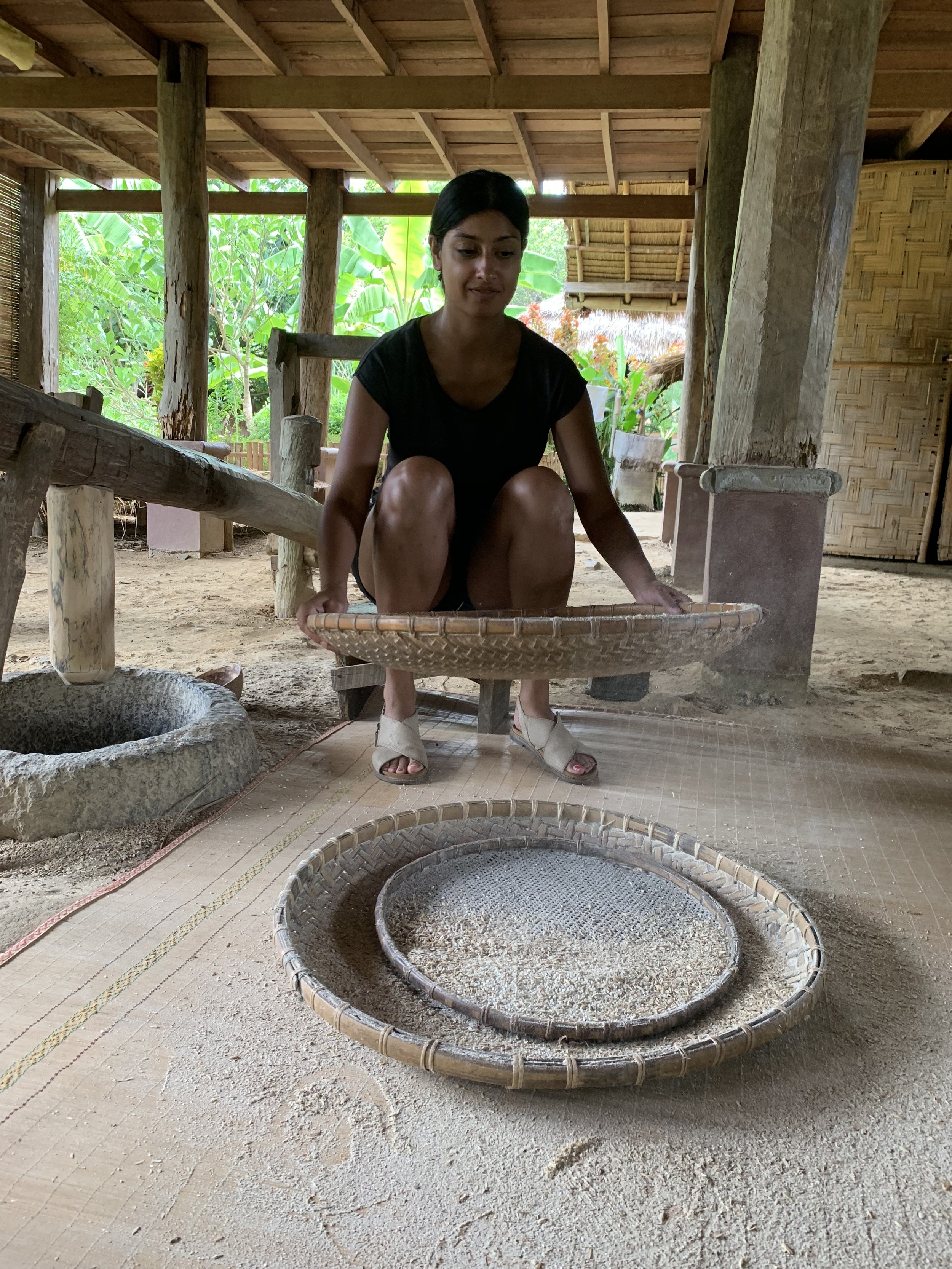
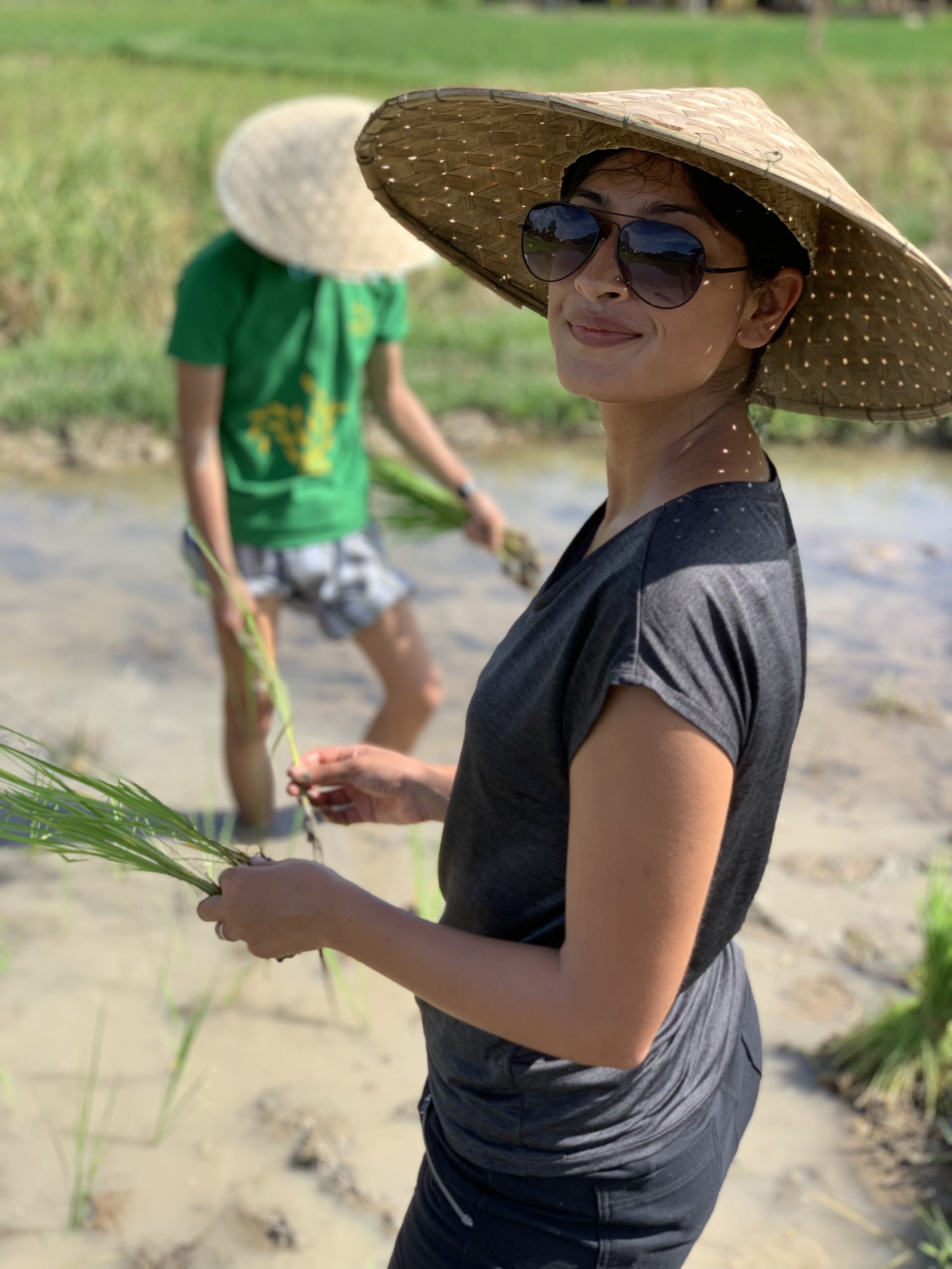
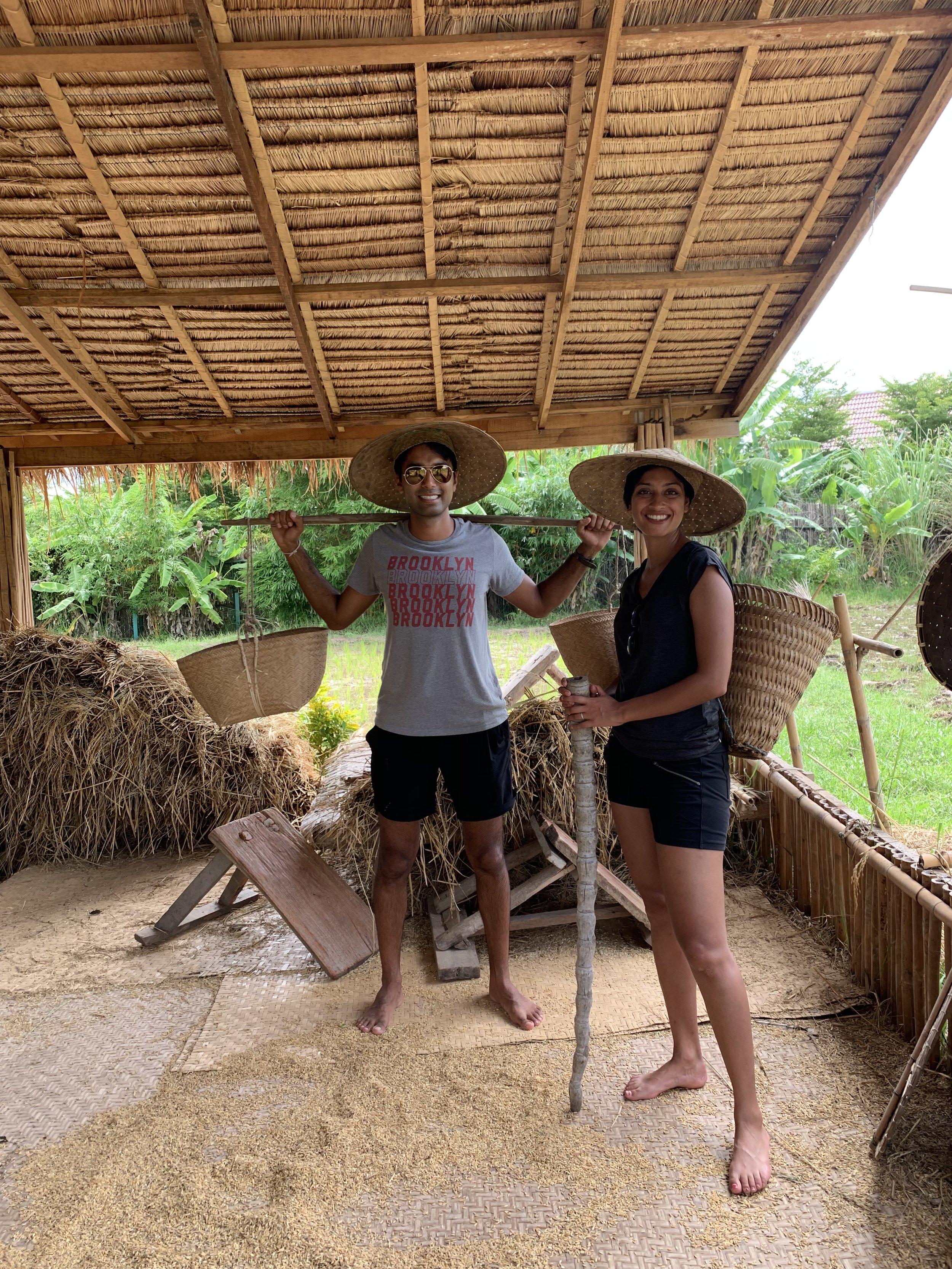
Our lunch also consisted of great company. Talia was a farm volunteer from NYC who left us particularly inspired. Similar to us, she left the city to escape the grind and explore the world, but she took a completely different approach. Her travels consisted of of volunteering for extended amounts of time, largely through light research, cold-calling and persusasion (gotta love that New York hustle). Many places she secured didn’t even have formal volunteer programs, but she was convincing as we learned. Along the way, she picked up great skills, like farming and cheese-making, and built meaningful relationships with the community that, compared to a hostel-jumping couple like us, just doesn’t accomplish.
For the first time in our trip, we were left with a little regret. We rarely spent more than a week in any one place, and meeting Talia made us question if we prioritized the right things on our trip. Adventure over service, quicker stays vs longer visits, etc. After spiraling for 24 hours, we came to the conclusion that it was pointless to re-litigate our decisions. Almost a half year of traveling had provided a little mental clarity. Don’t worry about the doors closed behind. Instead, make peace with your decisions and make the most of what’s ahead.
And in our case, that was Vietnam!
Also not to miss - the Kuang Si Falls, a short trip outside of the city






